All images sourced from the Dyke TV records at Smith College Special Collections
Summer 1993 was the summer of “lesbian chic.” In May, New York Magazine declared the arrival of “lesbian chic” on its cover, featuring a photo of K.D. Lang staring seductively into the camera. One month later, Newsweek ’s June issue claimed that lesbians were “coming out strong” (at the same time as it offensively questioned: “what are the limits of tolerance?”). That August, Vanity Fair released its now-famous butch-femme barbershop fantasy photoshoot featuring Lang posed with supermodel Cindy Crawford.

This newfound media attention was met with a fair amount of skepticism from lesbian activists and academics. The lesbian chic news stories typically portrayed lesbians as white, wealthy, and femme, which many felt misrepresented the diversity of lesbian and queer communities. While lesbian activists were often frustrated by the lack of media attention given to their concerns, the “lesbian chic” articles were largely fetishizing and superficial, narrowly focused on style rather than substance.
Dyke TV was one response to these criticisms. Premiering that same summer in June 1993, Dyke TV was a half-hour public access cable TV program focused on lesbian and feminist activism, community issues, art and film, news, health, sports, and culture. Created by three lesbian artist-activists — Cuban playwright Ana Simo, theater director and producer Linda Chapman, and independent filmmaker Mary Patierno — Dyke TV was a TV show made by and for lesbian, bisexual, and queer women. Dyke TV aired on New York’s public access stations from 1993 to 2006, as well as on Free Speech TV, a national, independent news network, from 2000 onward. In 1994, Dyke TV expanded outside of Manhattan to 14 other cities, and at its widest distribution, the show aired in 78 cities around the country. For over a decade, Dyke TV brought the diversity of lesbian communities into living rooms across the U.S.

I interviewed ten people involved in the production of Dyke TV to learn more about the history and development of the show. Dyke TV was a part of the resurgence of radical queer activism in New York in the 1980s and early 1990s. In groups like ACT UP, Queer Nation, and the Lesbian Avengers, members used public demonstrations, civil disobedience, and art and video activism to bring media attention to the intersections of HIV/AIDS, homophobia, police brutality, racism, and sexism. Dyke TV both chronicled and helped shape this historical moment.
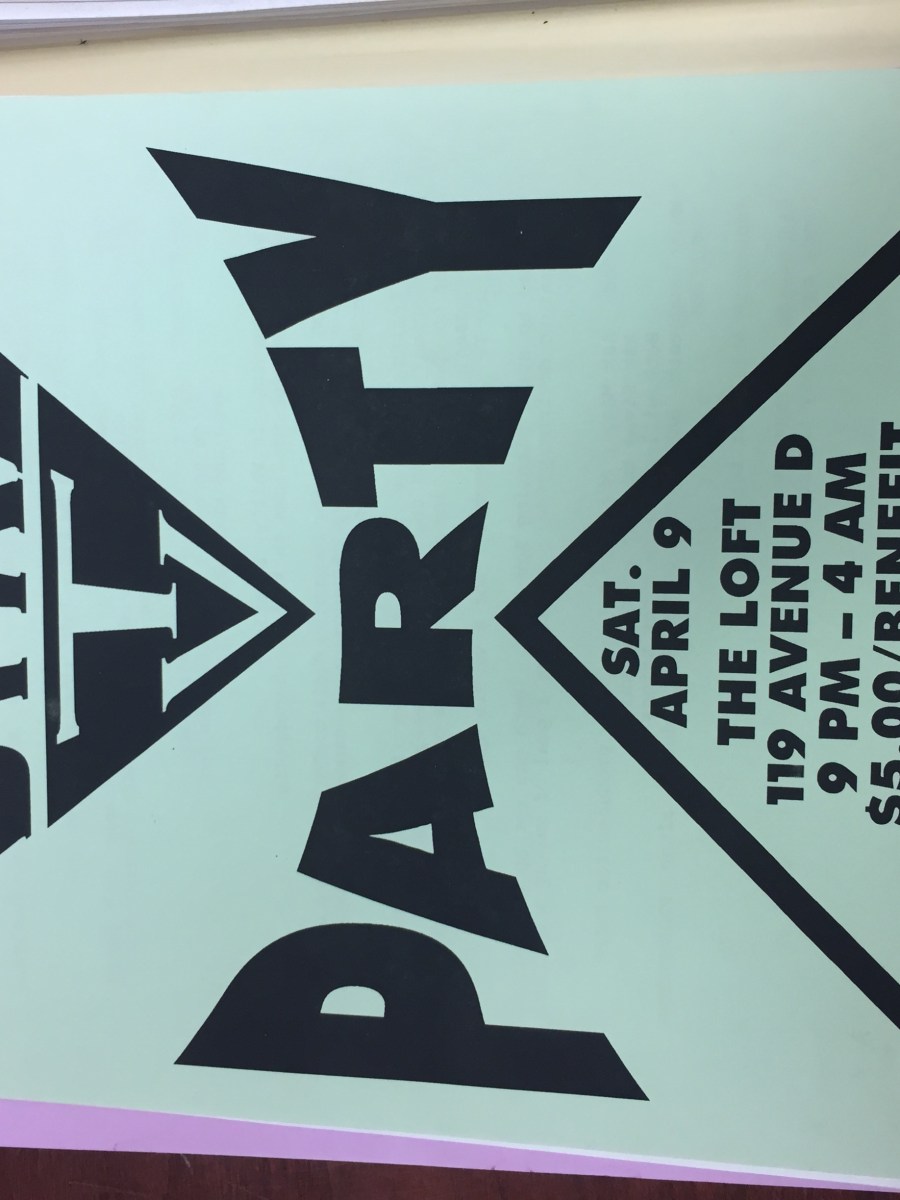
Over a series of emails with me, Ana Simo shared that she pitched the idea of a lesbian public access show to Linda Chapman and Mary Patierno in the spring of 1993. Simo was a prominent Lesbian Avenger, and she hoped the show would become a “stealthy agitprop instrument” on television editorially independent from, but politically aligned with, the Lesbian Avengers. “The Avengers urgently needed to set up our own alternative media” in order to “report on our work and, crucially, to expand our reach beyond the initial dyke activist community,” Simo believed.
This activist impulse is palpable on the show. As each episode opens, the host of the show announces: “You’re watching Dyke TV: television to incite, subvert, provoke, and organize.”
After joining the team, Patierno and Chapman used their connections in the professional arts world to expand the purview of the show to include interviews and performances with lesbian artists. They both suggested using a magazine format on the show, which would allow it to cover a wide variety of issues, vary the content from episode to episode, and incorporate video made by and with volunteers from across the city and the country.
Working with a large network of volunteers was crucial to Dyke TV ’s success: Simo, Patierno, and Chapman largely volunteered their own time and energy to produce weekly half-hour episodes, an overwhelming amount of work for three people. Consequently, they relied on volunteer producers to help create the show’s content. In 1994, Manhattan Neighborhood Network offered the team a crucial grant: It provided funding for Dyke TV to hold free and low-cost workshops to teach women with little to no filmmaking experience how to produce video.
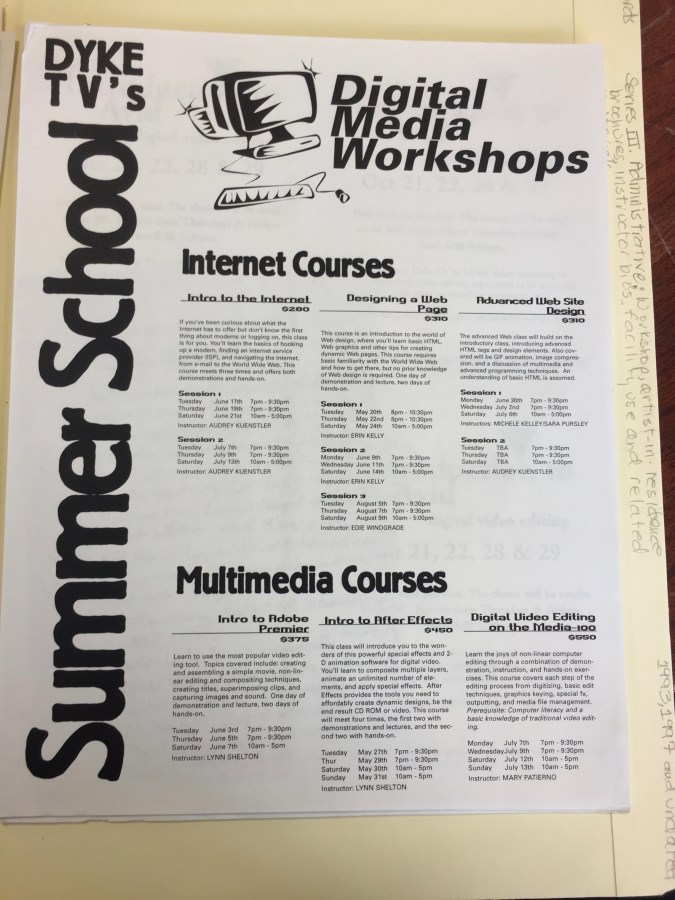
The Dyke TV founders continually affirmed that including a diverse array of lesbian voices in production was central to the mission of the show. Patierno explained:
“It was a real activist time, so there [were] these other lesbian groups in town…we would’ve been completely remiss if we didn’t reach out…it just felt like a no brainer, to be honest. We lived in New York. It’s a very diverse city…It would have been just a big void and a big problem if we didn’t try to make the show reflect at least what our city looked like and what the women in our city were doing.”
The producers conducted ongoing outreach campaigns to other lesbian and LGBTQ groups to recruit a diverse group of volunteers. Women were quick to participate, associate producer Harriet Hirshorn suggested, because it gave them the opportunity to tell their own stories: “that notion of, you know, picking up a camera and telling your own story and telling the story of your community and telling the story of your community’s ancestors…all of that was just really kind of riveting for people.” Over the years, Dyke TV worked with groups like the Asian Lesbians of the East Coast, the African Ancestral Lesbians United for Social Change, the Bronx Lesbians United in Sisterhood, and Las Buenas Amigas, whose members each produced segments for the show on a wide range of topics.
The name of the show was purposefully provocative. “We felt like it really encapsulated the times, which was a little bit in your face,” Patierno said. While “dyke” is an historically pejorative term, Chapman shared that the Dyke TV founders wanted to “take back that title” and turn it into something “affirmative,” and reclaiming the word “dyke” helped the team “confront lesbian invisibility.”

This provocative attitude is reflected in the show’s early logos. The phrase “Dyke TV” is styled to resemble the logo of a superhero. Like the irreverent and in your face demonstrations of the Lesbian Avengers (a group whose name conjures the image of vigilante caped crusaders fighting for lesbian justice), the Dyke TV team played with pop culture superhero imagery for its own provocative style.
The show’s original title sequence is playful as well: The letters spelling out “DYKE TV” fly into the frame one at a time. The letters, all-caps and in various bright colors, are shaped as if they have been cut out of a newspaper or magazine, reflecting the feminist zine and riot grrrl punk movements happening in the early 1990s.
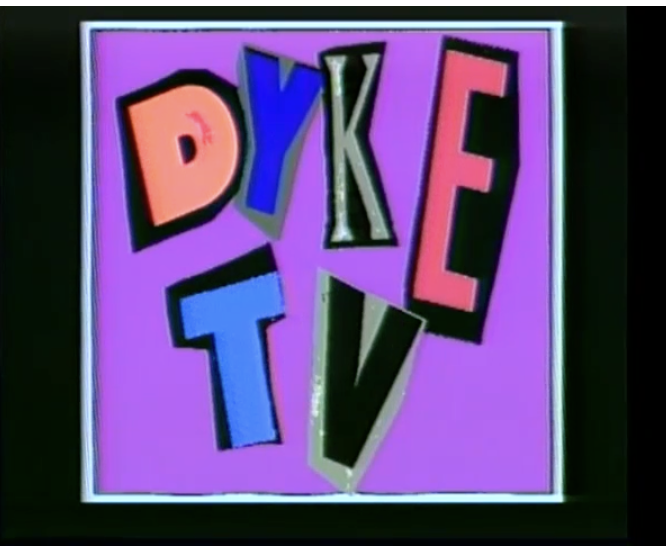
Dyke TV ’s recurring segments explore lesbian culture, life, and activism. On Dyke TV ’s first “Lesbian Health” segment, for example, two women on screen show the audience how to perform a cervical self-exam in front of the camera using a mirror, a flashlight, and a speculum. The segment recalls the ethos of the women’s health movement of the 1970s, reminding viewers that, as argued by publications like Our Bodies, Ourselves, it is important to empower themselves in a world where women’s healthcare is marginalized. Other “Lesbian Health” topics included AIDS and HIV transmission, menstruation, menopause, breast cancer, and family planning. The fact that public access TV in New York was relatively unregulated at the time allowed the team to openly discuss sexual health on the show and to air segments that would otherwise be censored on commercial TV.
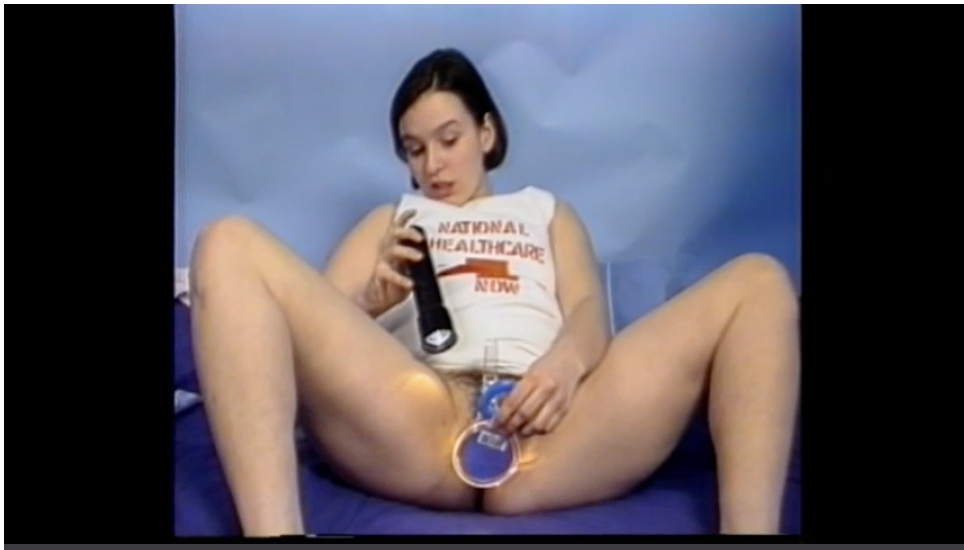
Another staple was “I Was a Lesbian Child,” segments that featured a woman narrating the experience of looking through pictures of her childhood as she reflects on her sexual identity development and family life. The segment was inspired by a Lesbian Avengers action, at which the Avengers wore t-shirts bearing the titular phrase to a protest of a school district in Queens. The “I Was a Lesbian Child” segments use childhood snapshots to trouble conventional understandings of girlhood as non-sexual and/or innately heterosexual. In each segment, lesbian identity becomes an act of reconstruction: a queer reading of childhood snapshots in the service of creating lesbian histories of the self.

Many episodes include an “Arts” segment, profiling lesbian, queer, and trans cultural producers. Over the years, the series showcased a “who’s who” of queer luminaries like Barbara Hammer, Cheryl Dunye, Carmelita Tropicana, Su Friedrich, Toshi Reagan, Nicole Eisenman, Barbara Smith, Leslie Feinberg, and Dorothy Allison, celebrating artists, writers, and musicians who were often ignored or under-appreciated in mainstream publications.
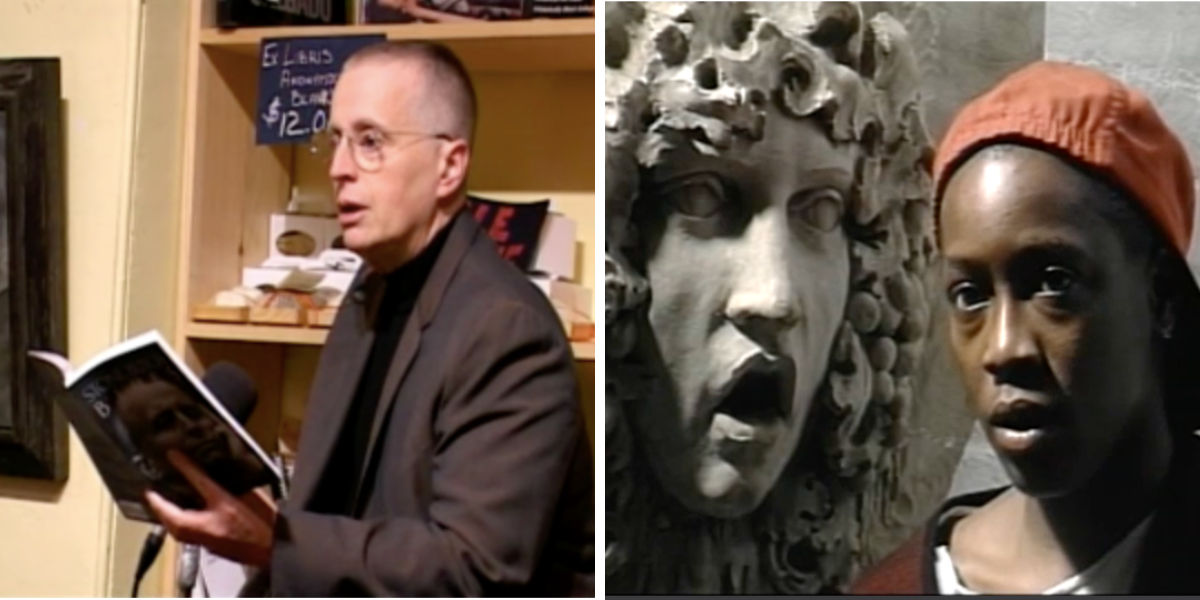
Meanwhile, Dyke TV ’s opening “News” and “Eyewitness” segments reported on LGBTQ current events around the country, and later, around the world, providing news coverage that would likely have otherwise gone unmentioned on TV. Into the 2000s, Dyke TV increasingly covered trans issues. Dyke TV covered the political funeral and memorial service for Amanda Milan, a trans woman murdered in New York, and aired a short documentary about trans women called I Am Your Sister featuring Sylvia Rivera. Dyke TV also profiled trans community groups like the Other Brothers in San Francisco, interviewed artists like Kate Bornstein, Silas Howard, and Harry Dodge, explored the drag king scene around the country, and covered trans legal resources available at the NYC LGBT Community Center. The Dyke TV team imagined an expansive understanding of the term “dyke,” and trans issues and activism belonged squarely within its mission and vision.

Other Dyke TV segments focused on love, sex, and relationships. “Dyke Dish” shared lesbian celebrity gossip, while “Lexa’s Lesbian Love Signs” provided tongue-in-cheek horoscopes for viewers invested in astrology. “Clubland” and “Oh What a Night!” were nightlife-themed segments that interviewed guests and staff at lesbian bars and parties throughout the city. “Blind Date,” a reality TV-esque segment ahead of its time, filmed lesbian couples before, during, and after their first dates. In the 2000s, the show created “What’s Your Problem?”, a call-in show within the show whose hosts gave viewers advice about their relationships.
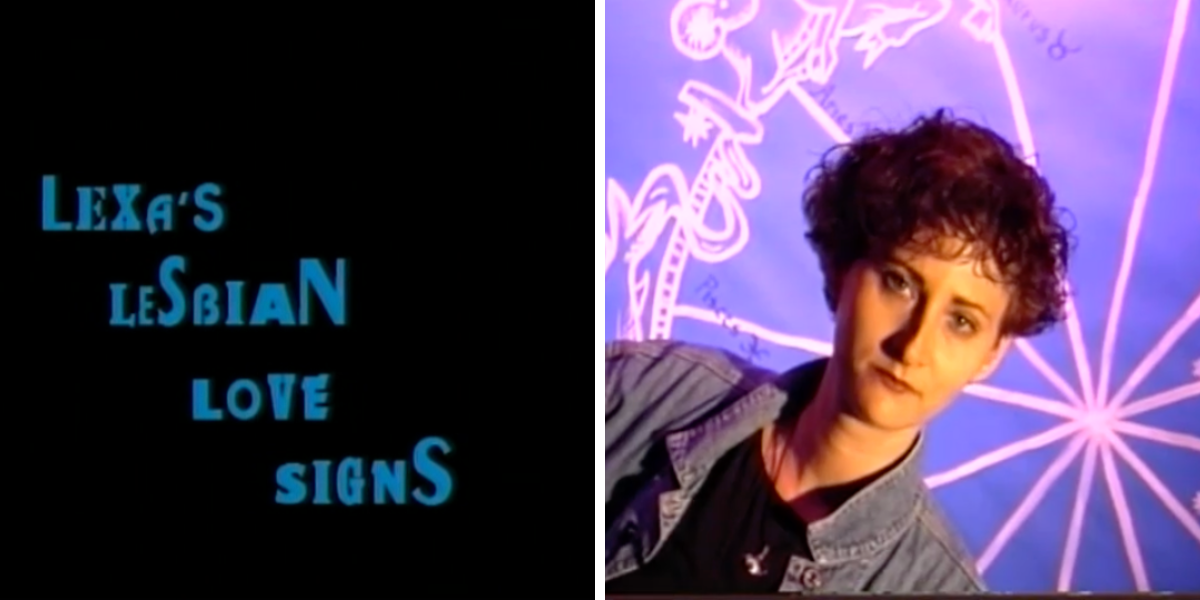
Dyke TV also filmed and aired its own promotional commercials. One recurring commercial tells the story of two women who break up with their male partners to date each other. At the end of the commercial, the voiceover narration declares: “Lesbianism, what a beautiful choice! Keep it that way. Support Dyke TV!” The commercial playfully suggests that women can choose loving and fulfilling relationships with one another by rejecting compulsory heterosexuality.

Over the years, Dyke TV faced a number of financial, technological, and social challenges. Like a lot of independent LGBTQ media outlets, Dyke TV pieced together its funding from a variety of different sources. A bequest from Mary Patierno’s brother, David Miller, who died from complications due to AIDS in early 1993, provided the bulk of its early funding. Other sources included viewer donations, sponsorships from LGBTQ businesses, and grants from foundations. The executive producers incorporated the show as a nonprofit called DTV Productions, Ltd. and assembled a board of directors to help sustain production over the years.
Still, throughout the 90s and 2000s, the team had trouble raising funds to match its expenses (rent, office supplies, video equipment, and small salaries for its few staff members). Dyke TV episodes began airing biweekly and later monthly, decreasing the production output to lower costs and reduce the constant pressure on staff and volunteers to create and edit content for the show.
To create a new source of revenue for the show, Dyke TV also began to offer workshops focused on digital media rather than just video production, including introductory courses to using the Internet, designing a website, and digital video editing.
Through the 90s, Dyke TV moved offices to cheaper locations as rents rose across Manhattan and moved to a storefront in the Park Slope neighborhood of Brooklyn in the early 2000s.
Dyke TV ’s move to Brooklyn, where it operated until the last episode aired in 2006, signaled bigger shifts that led to the show’s end. In the early 2000s, the founding producers of the show were largely no longer involved in its operations, having moved on to focus on their own projects and careers. By 2003, the most senior staff member was Jules Rosskam, a 23-year-old trans filmmaker who served as the Executive Producer until 2005. While Rosskam, along with a number of volunteers, organized to produce Dyke TV segments and episodes, the lack of mentorship from more experienced filmmaking professionals impacted the consistency and format of the show, as well as staff morale. “Everyone involved just scrambled to get money to keep the organization afloat and pay our rent,” he told me. Constant financial insecurity plagued the small team, making it difficult to envision a sustainable future for the show.
Technological and representational changes impacted the show as well. Cheaper video technologies and digital video editing software became widely available in the 2000s. By 2005, new digital streaming websites, like YouTube, provided a free (if corporate-funded) platform for video distribution. A burgeoning LGBTQ and feminist blogosphere shifted interest away from public access towards new opportunities and platforms for writers online. Many queer filmmakers could use digital media to tell their stories and share their perspectives without relying on the resources at their local community media center.
As commercial media outlets grew interested in representing lesbian culture in the 2000s, Dyke TV ’s efforts to claim a space for lesbian visibility on TV became less urgent. It may not be a coincidence that Dyke TV closed its doors two years after the premiere of The L Word. While the 90s “lesbian chic” phenomenon was short-lived, it created a model for commercially successful lesbian content adopted by marketers, advertisers, and media executives throughout the 1990s and 2000s that appealed to straight viewers and consumers. The increase in lesbian representation sparked hope that commercial TV might finally provide opportunities for LGBTQ representation, seemingly lessening the need for independent LGBTQ TV.
In 2005, lawyer Cynthia Kern was hired by the board to serve as the Executive Director of Dyke TV. While hoping to revive the organization, she closed it by the end of 2006. “In the end, the money wasn’t there anymore,” Kern told me. Fewer volunteers, increasing rent prices in Brooklyn, and a lower demand for services meant that Dyke TV was quickly running out of money as well as content. Without the money to fund operations, Kern and the board had no choice but to close Dyke TV for good.
With the help of a volunteer, Kern packed up the storefront and drove the records up to Patierno’s house in Western Massachusetts. Some years later, Patierno donated the archives to the Smith College Library, where the video content and paper records are accessible for researchers. Smith has since digitized many episodes of the show, which are available to watch on its website.
While financial struggle, changes in TV representation, and the development of digital technologies eventually made it difficult to continue producing Dyke TV, the show has had a contemporary revival. Video journalist Ainara Tiefenthäler organized a series of Dyke TV screenings in Brooklyn between 2018-2020, before the beginning of the COVID-19 pandemic. The show resonated far more with her experiences of lesbian relationships and community than contemporary and commercial movies and TV. “Every lesbian I know is hungry for content,” Tiefenthäler told me over the phone.
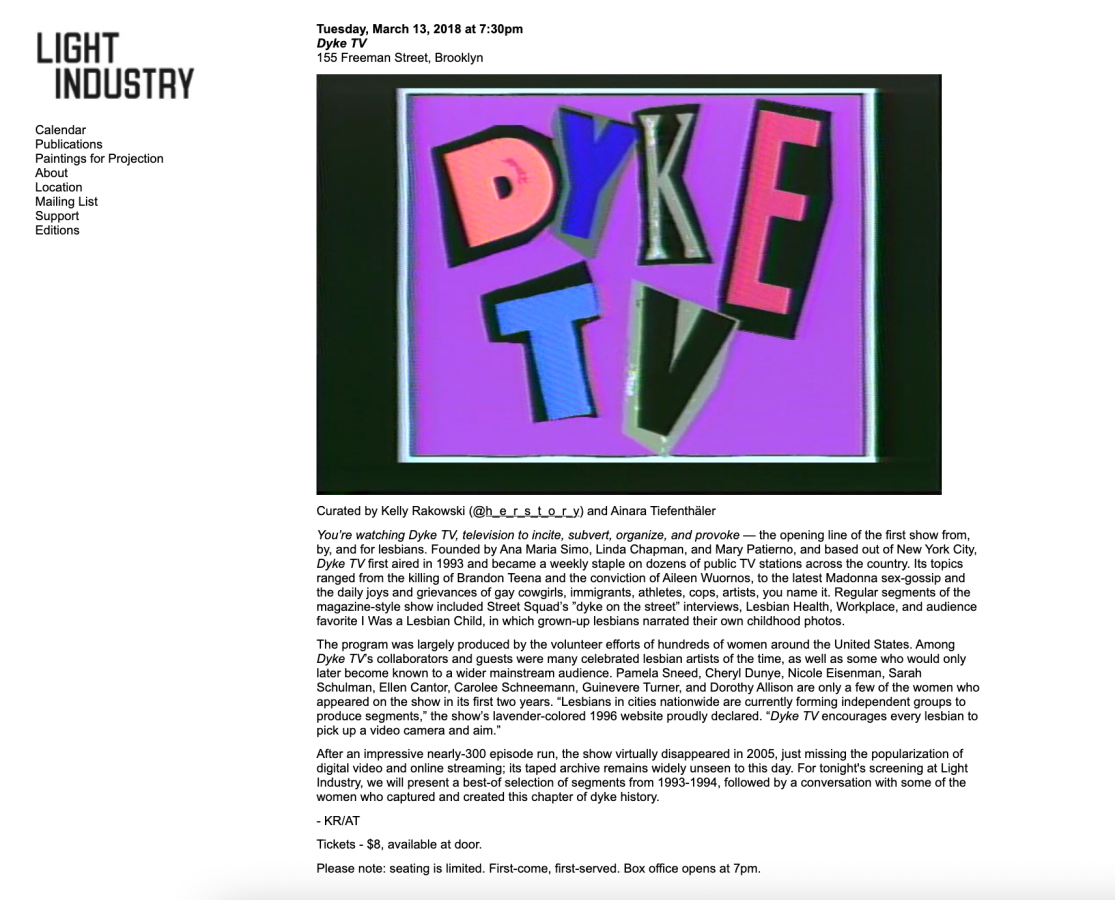
Dyke TV ’s scrappy, homegrown feel contrasts with slick, highly produced commercial media made about lesbian lives. Its expanisive, activist mission still feels novel in a media landscape where LGBTQ representations are typically designed to appeal to a straight, cis audience. At a time when independent LGBTQ and feminist media outlets have shuttered because of lack of funding, sharing the history of the show can demonstrate just how important these outlets are to creating and sustaining LGBTQ community. As Tiefenthäler told me, Dyke TV still feels necessary: “It doesn’t seem very dated to me…overall the way topics are treated, the kind of humor, what kind of issues are covered or discussed, still seems awfully relevant.”








Comments
This is excellent, thank you!
!! I was a Philly reporter for Dyke TV.
Tracy that is so so cool! I’d love to hear about your time working on the show. Feel free to reach out!
I have tons of footage on Hi8 tapes sitting in storage. I’d love to digitize it some day.
Digitizing those tapes is a great idea! You could also consider contacting the archivists at the Smith College Special Collections (specialcollections@smith.edu) to let them know you have the tapes and ask what they suggest. They might be interested in acquiring them and adding them to their Dyke TV collection!
WHAAAAT TRACY THIS IS AMAZING! THIS PHOTO OMG!!
This is so cool!
This is incredibly cool, Tracy!
I worked in the office recruiting and training volunteers and interns! It was after I left the Avengers, maybe ‘93.
Gail that is amazing! I’d love to hear more about your experience if you’d like to share it with me. Feel free to reach out!
Fascinating bit of history — thank you!
Excited to watch those archived eps!
This is absolutely fantastic
This is amazing!
Wow!!!!
I am looking for a soulmate. I want to make a movie where I’m castrated by a lesbian.